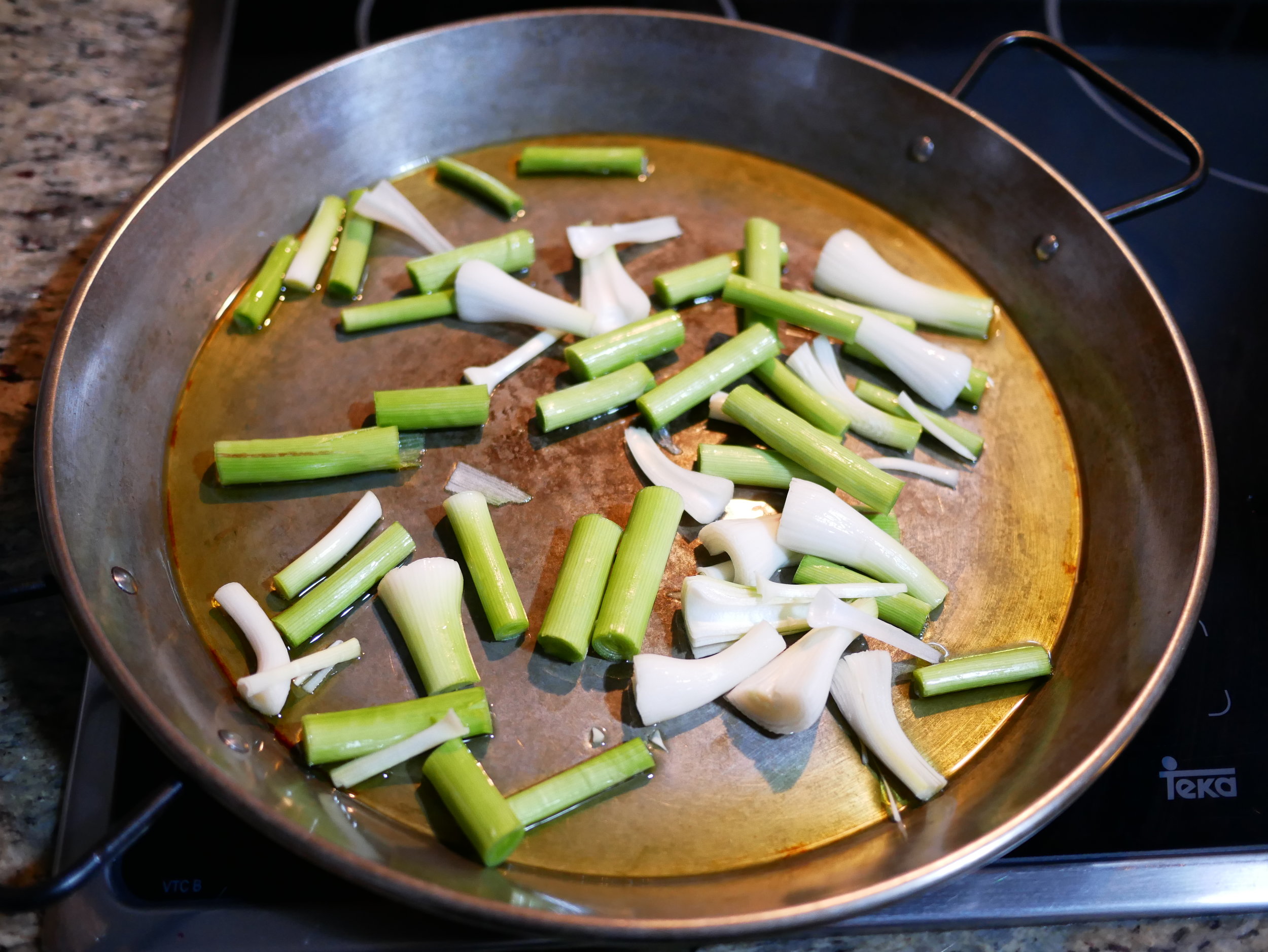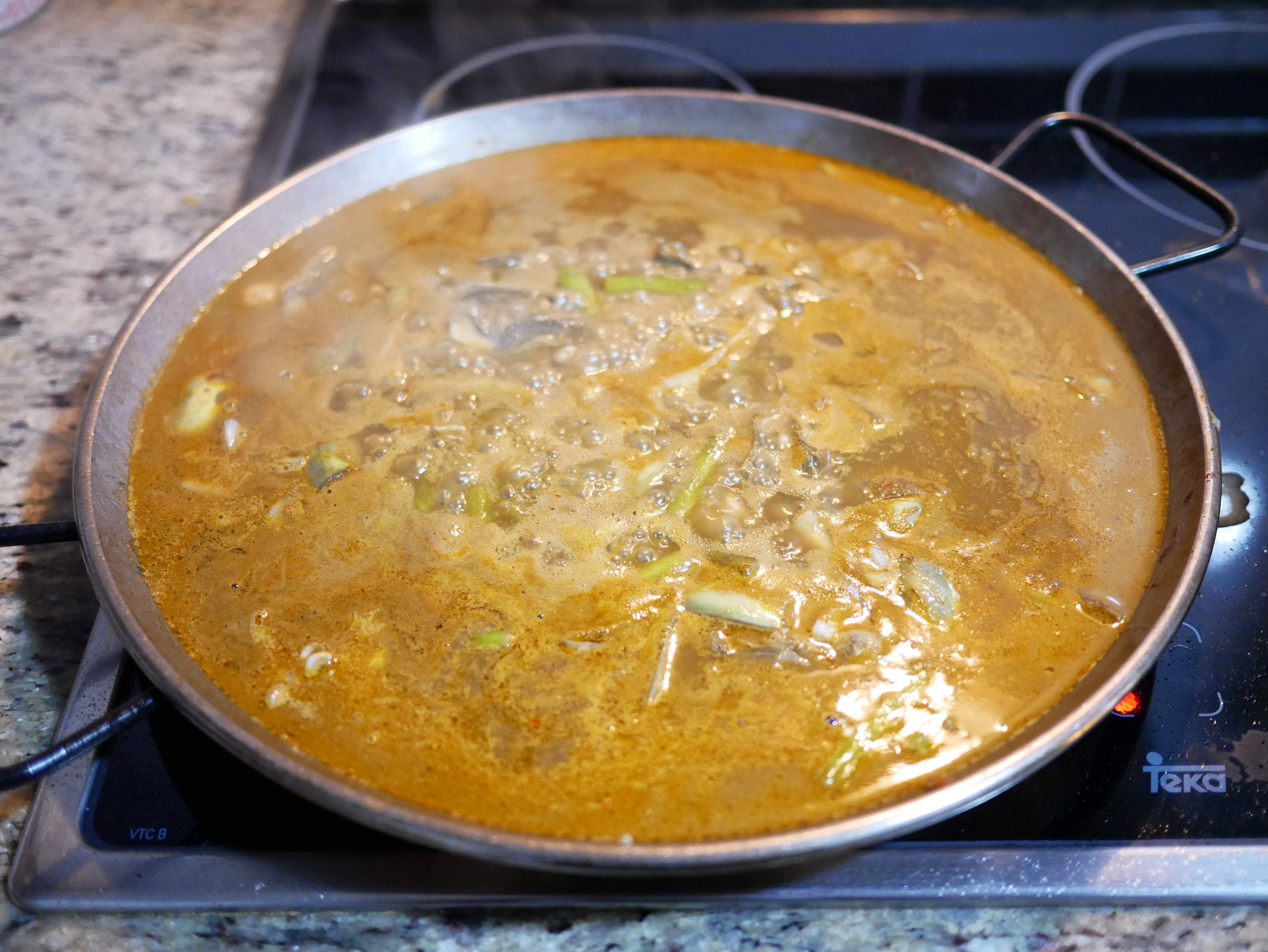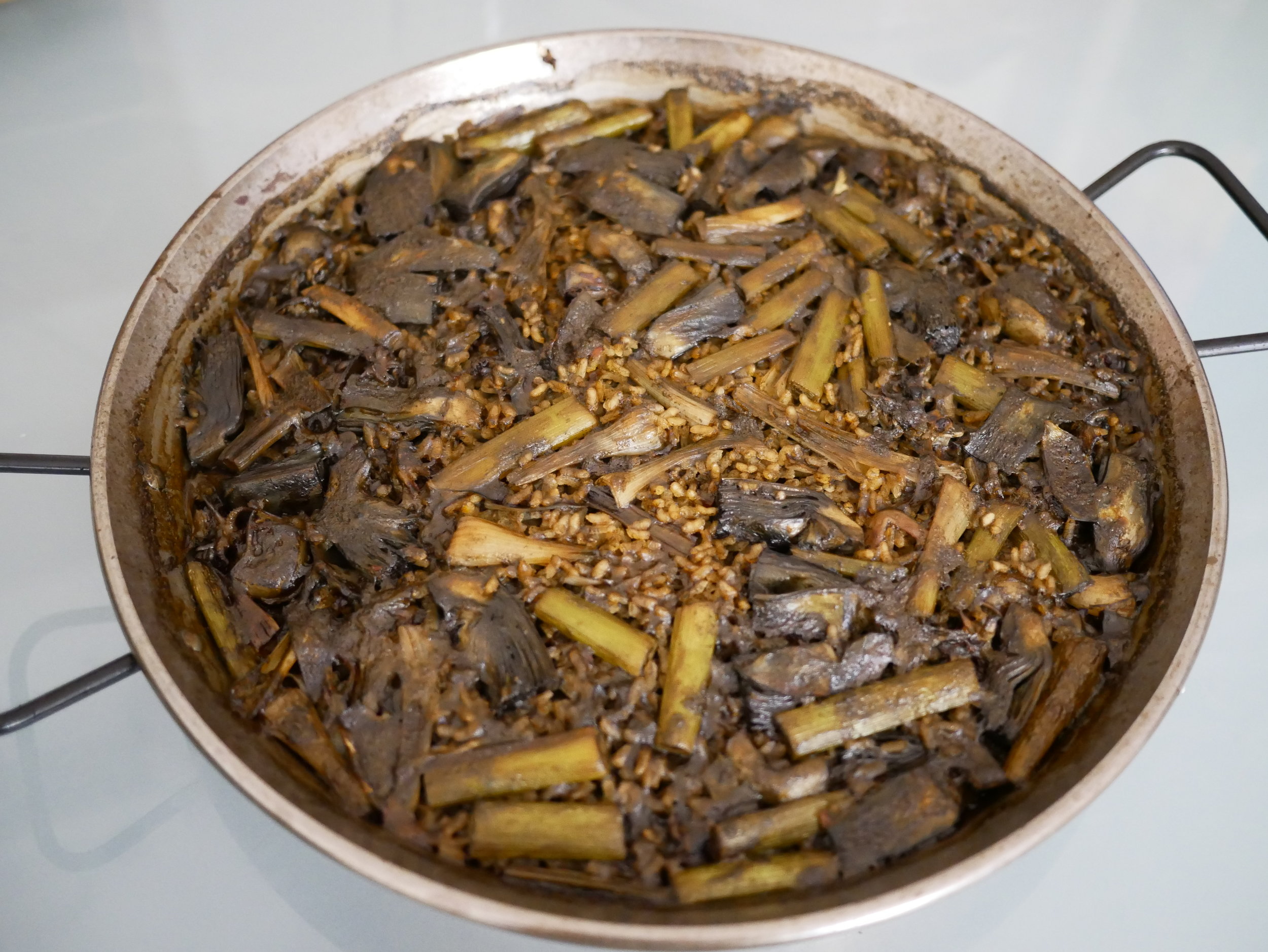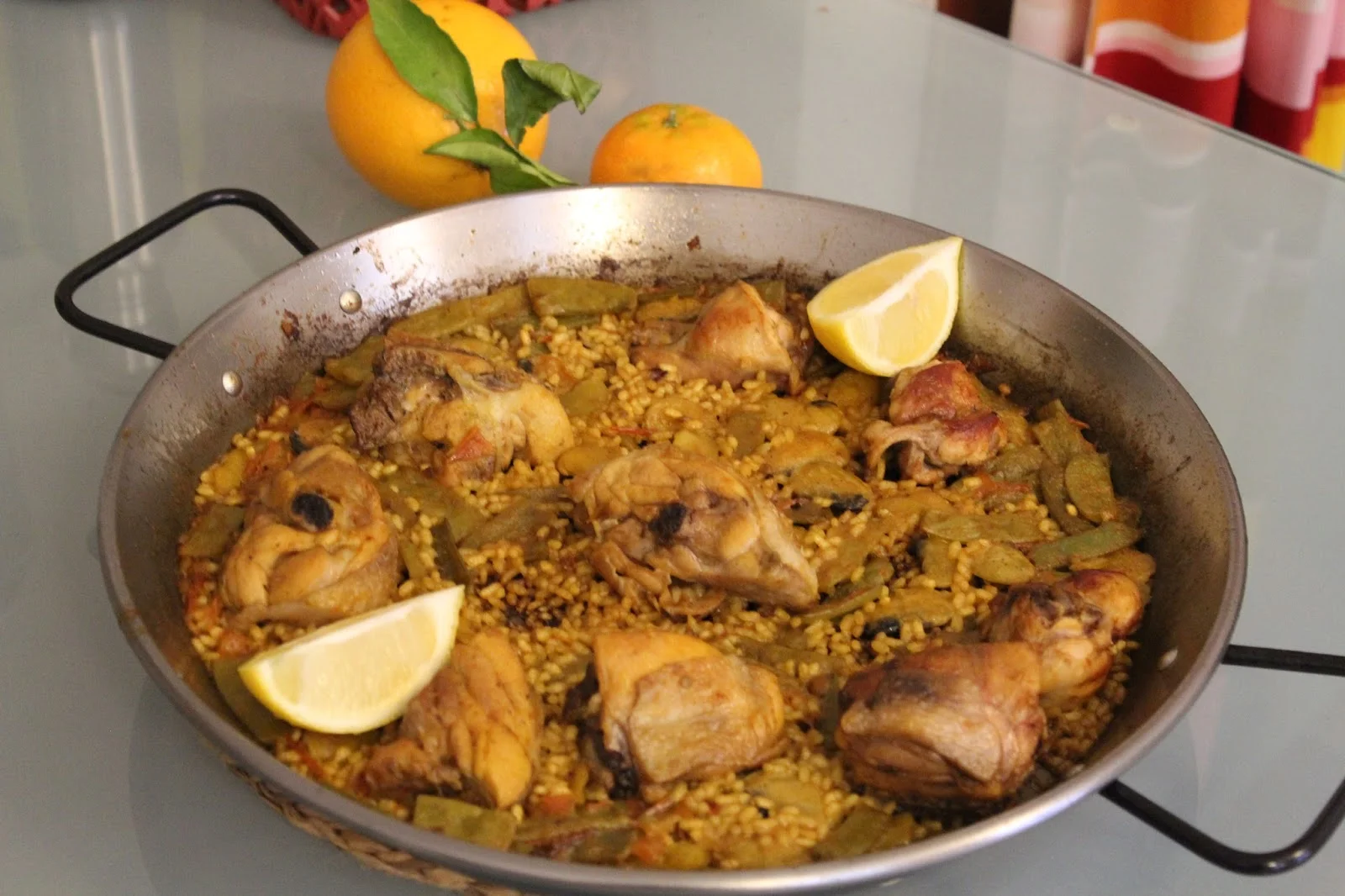Spring paella: sepionet (baby cuttlefish), green garlic, and artichokes
After making the classic tapa of sepionet (baby cuttlefish), green garlic, and favas, I realized how easy it was to cook with sepionet! Since the fishmongers remove the cuttlebone for you, it's ready-to-cook right out of the shopping bag, with no prep work required besides some rinsing if you wish. And they cook quickly, too.
I hadn't made a paella in a long time, so I decided to make another springtime-inspired recipe, this time with green garlic and artichokes.
First I cut up the bunch of green garlic (about 8 shoots) and start frying it in the paella pan, since it can take about 5 minutes to get soft.
Then I cut up three baby artichokes, putting them in some lemon water to reduce browning. I also grate up one tomate de pera, or plum tomato.
After the green garlic got a bit soft, I sautéed the artichokes a bit (draining the water), and then pushed the vegetables to the side to fry up the tomato to make a "sofrito." I sprinkled on some paprika on top of the tomato.
After the tomato cooked down, I put in the baby cuttlefish. These cook super rapidly, so be sure to have the rice and fish stock ready.
For two people, I used 100 grams of bomba rice (3.4 ounces, like the airport carry-on liquid limit!). Then I fried the rice together with all of the ingredients for a minute.
I later calculated that this should go with 500ml of fish stock, but in this picture I put in too much, which made my rice a bit soggy. Also, for this recipe I used a ready-made stock, from the brand Aneto. This really helped make this recipe into an easy weekend meal, rather than a drawn-out affair with lots of pots to clean. At this point, I also added in a pinch of crushed saffron.
The trick to making paella at home, where the paella pan is a lot wider than the burners on the stove, is that after the stock reaches a simmer, put the whole pan in a pre-heated oven with bottom heat only at maximum heat (250 Celsius or 480 Fahrenheit is the max on my oven), with the shelf on the lowest level. This ensures an even cooking of the paella, and the rice should cook in 20 minutes or so.
The ink from the cuttlefish turns the rice a bit dirty, but you can still see the natural yellow of the saffron shine through. It's typical in Spain for restaurants and home cooks to use a powdered food coloring, and many Spanish people are accustomed to a very bright yellow in their paella. I can't really bring myself to use food coloring for something like this, so I'm fine with my more desaturated paella!
From start to finish, with prep work to the end, the process should take about an hour and a half, so it's reasonably quick to make for a weekend lunch. Remember, the Spanish don't eat paella for dinner!











